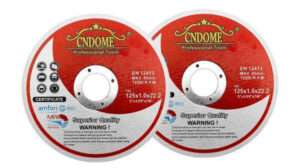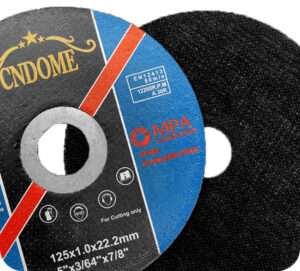In the maritime industry, efficiency, safety, and precision are paramount. Whether it’s for maintenance, repair, or general operations aboard a vessel, having the right tools can make all the difference. Among these tools, cutting discs play a crucial role in various tasks, from metalwork to fabrication. To ensure seamless procurement and utilization, the International Maritime Purchasing Association (IMPA) has introduced a coding system specifically tailored for these indispensable components.
Decoding the IMPA Code for Cutting Discs
The IMPA code for cutting discs is designed to streamline the identification and acquisition process, enabling maritime professionals to swiftly pinpoint the exact specifications they require. Let’s delve into the components of this code to unravel its significance:
1. IMPA Code Structure
The IMPA code follows a structured format, comprising four numerical digits. Each digit corresponds to a specific attribute of the cutting disc, facilitating precise categorization and selection.
2. Disc Diameter (First Two Digits)
The first two digits of the IMPA code denote the diameter of the cutting disc in millimeters. This crucial specification ensures compatibility with the intended application and equipment. For instance, a code starting with ’11’ indicates a disc with an 11-millimeter diameter.
3. Disc Thickness (Third Digit)
The third digit in the IMPA code signifies the thickness of the cutting disc. This dimension is pivotal in determining the disc’s durability, cutting capabilities, and suitability for particular materials. A thicker disc may offer enhanced stability and longevity, while a thinner one might provide more precision in intricate cutting tasks.
4. Application Type (Fourth Digit)
The fourth and final digit of the IMPA code denotes the type of application for which the cutting disc is optimized. This includes factors such as material compatibility, cutting speed, and intended usage environment. Whether it’s for stainless steel, aluminum, or other metals, this digit ensures that the cutting disc meets the specific requirements of the task at hand.
Benefits of the IMPA Code System
The adoption of the IMPA code for cutting discs brings forth a multitude of benefits for maritime professionals and procurement entities:
1. Standardization and Simplification
By adhering to a uniform coding system, the IMPA code standardizes the identification and classification of cutting discs. This simplifies the procurement process, reduces errors, and enhances efficiency in sourcing the right components.
2. Precision and Accuracy
The detailed nature of the IMPA code enables precise selection of cutting discs tailored to the unique needs of each task. From diameter to thickness and application type, every aspect is meticulously accounted for, ensuring optimal performance and safety.
3. Compatibility Assurance
With clear specifications outlined in the IMPA code, compatibility issues between cutting discs and equipment are minimized. Maritime professionals can confidently select discs that seamlessly integrate with their machinery, reducing downtime and enhancing productivity.
4. Enhanced Safety and Reliability
By selecting cutting discs based on their IMPA codes, personnel can mitigate risks associated with using incompatible or substandard equipment. This prioritization of safety and reliability is fundamental in maintaining a secure working environment onboard vessels.
Conclusion
The Cutting Disc IMPA Code serves as a beacon of efficiency and precision in the maritime industry, empowering professionals to procure and utilize these essential tools with confidence. Through standardized classification and detailed specifications, the IMPA code system ensures seamless compatibility, optimal performance, and enhanced safety across various cutting applications. Embracing this coding framework underscores a commitment to excellence and reliability in maritime operations, setting the stage for streamlined maintenance, repair, and fabrication endeavors aboard vessels worldwide.



